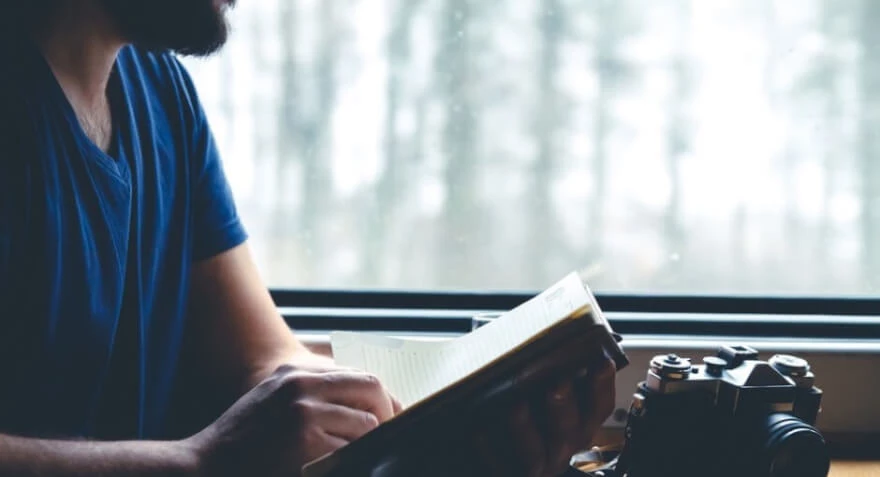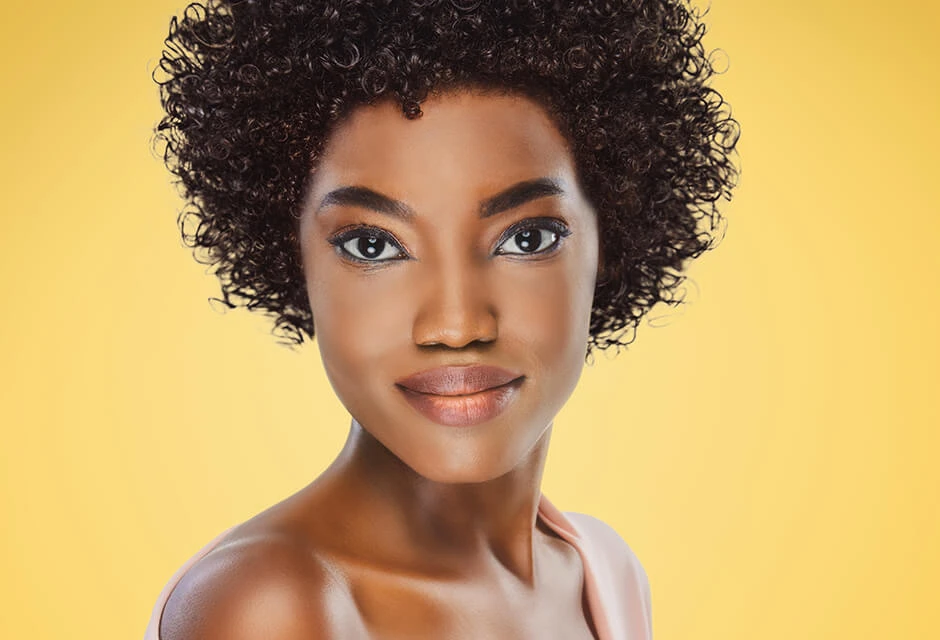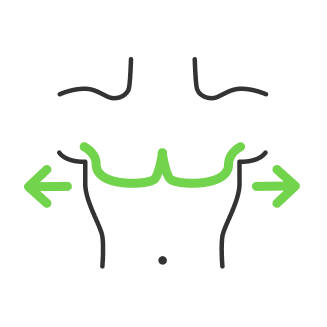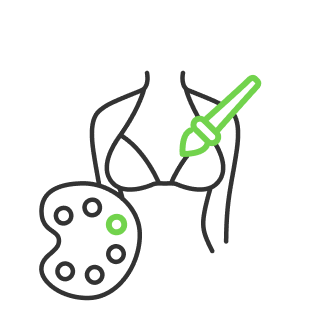Top 21 books every photographer should read

- Photography foundations for art by Mark Galer.
- The photographer's mind remastered: creative thinking for better digital photos by Michael Freeman.
- Dialogues by Henri Cartier-Bresson.
- Dramatic portrait by Chris Knight.
- A new history of photography by Michel Frizot.
- 50 photo projects: ideas to kickstart your photography by Lee Frost.
- The photographer's eye by Michael Freeman.
- The guide for serious photographers by Michael Langford, Anna Fox and Richard Soudon Smith.
- Expressional photography by Tracey Clark.
- The hot shoe diaries by Joe McNally.
- Wedding photography field guide by Michelle Turner.
- The intelligent eye by Richard Langton Gregory.
- Professional portrait retouching techniques for photographers using Photoshop by Scott Kelby.
- The model: a book on the problems of posing by William Mortensen.
- The art of color: the subjective experience and objective rationale of color by Johannes Itten.
- Interaction of color by Josef Albers.
- Ways of looking: how to experience contemporary art by Ossian Ward.
- A history of pictures: from the cave to the computer screen by David Hockney.
- Understanding exposure by Bryan Peterson.
- Steal like an artist: 10 things nobody told you about being creative by Austin Kleon.
- Read this if you want to take great photographs by Henry Carroll.

Do you have a good camera, but no theoretical knowledge to take great shots? There are photography books for every type of photographer from beginners to experienced professionals. That is why it is better to start from becoming a good reader first. A creative book is a perfect source of inspiration and tips, proven by time and thousands of experienced experts. Photography industry is not only about exposure and composition. Look through a selection of specialized literature that will help you to learn the camera settings, features of different styles, correctly build a frame and significantly improve your level. The list of books can be divided into items of general interest and some particular books, devoted to the inner personalities of photography experts.

1. Photography foundations for art by Mark Galer.
The book covers almost all aspects of photography: from artistic point of view to the processing of every photograph. The main advantage is the large number of exercises for photographers after each section. By doing them, you can increase professionalism as you read the book and bring many skills to a personal technique.

2. The photographer's mind remastered: creative thinking for better digital photos by Michael Freeman.
The book is a wonderful guide which is able to teach material in an accessible language, with a large number of author's examples. This is literally a business alphabet of a modern photographer, with which it is worth starting to delve into this fascinating art. The book teaches to be not just technical, but also creates the artistic approach, to take digital photos with deep meaning and emotions.

3. Dialogues by Henri Cartier-Bresson.
The photographer himself practically did not write about his practice, so the best source of information about it is conversations with him. Bresson told reporters what technique he used in his work. For example, Bresson never used flash to make an image authentic. Speaking about the artistic side of photography, he argued that he was not a romantic. In his opinion, the most beautiful motion picture is in old Chaplin films, where the light falls on everything from one side. In addition, Bresson said that color photography was an emasculated vision, it was liked only by merchants and magazines.
In his interviews, the author talked a lot about the profession. He himself worked as a photojournalist, so he talked about the essence of reportage photography.

4. Dramatic portrait by Chris Knight.
This book deals with two aspects of creating a portrait. The author tells how to get a beautiful image and how to express your thoughts with it. Knight turns to the history of art to determine the basic techniques for creating a portrait and how they affect psychological perception.
The author pays special attention to light. He considers it the main way to tell a story in photography. According to Knight, light helps to create the character of the hero of the portrait. To choose the right technique, he advises turning to various principles of perception, for example, gestalt psychology.
The author also explains how color works, what color meanings, and what color schemes exist. He explains what digital photography consists of. This knowledge is needed to properly process images in graphic editors. At the end, Knight reviews his own work to show how he applies all the techniques mentioned in the book.

5. A new history of photography by Michel Frizot.
Another option among the best photography books, is a publication, spanning the time from the birth of drawings to pictorialism. It was created with the efforts of the best historians and scientific research. In this work, many stereotypes were rethought. Many ideas and styles are still used by photo experts of the 21st century. That is why read this book to discover how often we use old tricks in modern photography.

6. 50 photo projects: ideas to kickstart your photography by Lee Frost.
All the technical knowledge in the world is useless if you have no idea how to use it. Lee Frost's 50 Photo Projects is one of the best guides for photographers. It is filled with suggestions for getting out of your comfort zone and creating exciting new looks. With impressive excitement and energy, the author jumps from ideas for architecture to ways of capturing fast-moving action. He also discusses scanning techniques, black and white conversion, and many other aspects of photography that you might not have thought about. By the time you're done, you'll be full of ideas and determination.
Look at your everyday surroundings in a new way. Taking photos is not just about visiting incredible places and clicking shutter buttons. No matter where you live, a world of incredible images will be created on your doorstep. The book will teach you to see potential wherever you are and no matter what you use. It has tips and exercises that work equally well whether you're using a DSLR or iPhone, and authors provide many of their own images captured on all sorts of different devices just to highlight this.

7. The photographer's eye by Michael Freeman.
The book discusses a lot of questions: how and why photos are recognized as works of art, how to correctly assess the cost of photographs, how to understand styles and trends of modern photography. Detailed attention is paid to genres, creative means and techniques, the secrets of light and exposure for photographers.

8. The guide for serious photographers by Michael Langford, Anna Fox and Richard Soudon Smith.
We recommend this wonderful volume in the 10th edition for a good reason. Since the 1960s, Langford has been one of the leading authorities on the art and practice of photography, and in this latest edition, the entire experience of the talented artist is collected, expanded and updated. It covers pretty much everything you could wish. While that means the volume is big enough and you won't carry it in your backpack for quick inspiration, it will also make time for you to read and learn more information. The authors guide you through all the basic concepts of photography. When it comes to the best photography books, you will have a hard time finding anything that is better.

9. Expressional photography by Tracey Clark.
Being in the top of photography books for beginners, this publication contains more than 230 photos with detailed analysis of technical and compositional techniques. An overview of methods and tools used by the world's best photographers is published in all details of lighting, aperture and exposure. The reader will be able to discover interesting objects for shooting, build a convincing composition, take great pictures even with a simple digital camera and retouch photos with a high quality editing style.

10. The hot shoe diaries by Joe McNally.
The author of the book is a world famous photographer from the USA. His main talent is the ability to work with light. He knows how to describe it, what shape to give, how to control and use every ray. The technician can create optimal lighting conditions even with standard equipment. The book contains personal reasoning and examples that will be useful to all photographers.

11. Wedding photography field guide by Michelle Turner.
The book reveals secrets of creating great wedding pictures. Examples of 350 photographs with detailed technical and compositional analysis are provided with high attention. Many secrets and professional "tricks" are revealed. The book is worth reading if you are looking for a new approach to a good old wedding event.

12. The intelligent eye by Richard Langton Gregory.
The book tells about how vision was formed and how it allowed us to move from reactive to tactical behavior. And how, as a result of these changes, abstract thinking appeared.
When you read this book, it surprises you with the transparency and imperceptibility of a complex process of vision. It is no less surprising that we perceive flat pictures as three-dimensional spaces. It is impossible to squeeze three dimensions into a space without losing information. And since any two-dimensional projection can correspond to an infinite number of three-dimensional ones, the depth in the pictures is always ambiguous. Our brain solves this problem by comparing the image with the real situation seen in the past, and selects the most appropriate visualization. But if there are several suitable real situations for planar projection, erroneous or ambiguous perceptions arise.
It is also curious that previous experience and knowledge do not always help to get rid of the paradoxicality of perception. And sometimes it happens exactly the opposite, the brain rejects the received data from eyes and replaces them in another way, more real in its opinion. No matter how hard you try, you won't be able to see the concave profile of the mask, it will always appear convex. Because from the point of view of the brain, a concave face is absolutely impossible.

13. Professional portrait retouching techniques for photographers using Photoshop by Scott Kelby.
The most popular modern author of manuals for photographers in his next book reveals several techniques for working with the program for processing images. In particular, readers will learn how to work with portraits: smooth skin, luxurious lips, improved eyes, eyelashes and eyebrows, eliminated skin imperfections and retouched photos while preserving a natural look.

14. The model: a book on the problems of posing by William Mortensen.
The author does not limit his students and does not apply any rules. This book does not contain a set of poses that can be found in any material. Mortensen's book differs from all the others. It teaches to work with the model in the only possible way. The author leaves complete creative freedom, pointing out only frequent mistakes that can spoil the impression of a person's image.
The first edition came out in 1937, and much has changed since then. Indeed, the chapter about the dress and the image of the model should be considered as the one before. But everything else is relevant to this day, the human body and its behavior under the influence of gravity have not changed. If you are filming people, you must read this book.

15. The Art of color: the subjective experience and objective rationale of color by Johannes Itten.
Some people consider books on photographic composition to be a waste of time and money. All that is said in these books is a set of clichés. Of course, the use of these techniques makes photos effective, organizing elements within the frame. But it’s much more important to understand why these techniques work than to mindlessly repeat them. Photography as a form of creativity is part of visual arts. Learning composition is best on a more fundamental level.
Johannes Itten is an early 20th century artist and teacher at the Bauhaus School of Design, where modern design begins. The books The Art of Form and The Art of Color are notes that Itten gave to students. Despite the fact that about 100 years have passed since then, these principles are still valid today. The idea of the color wheel and color matching is used everywhere: in tinting of paints, selection of color combinations in clothes and in graphic editors.
Small books are easy to read. The only drawback is that the publication lacks illustrations of examples that Itten refers to.

16. Interaction of color by Josef Albers.
The book is a collection of exercises for training the sensitivity of color perception. It helps to sort out your own likes and dislikes for certain color combinations. Understand how the perception of color changes depending on the conditions of observation.
Color is the most relative visual medium in art. There is a discrepancy between physical condition and psychological perception. Depending on the surrounding shades, the same color will be perceived differently.
Here is one exercise that explains why we perceive colors differently than they really are.
For this exercise you will need two even circles with a diameter of about 10 centimeters: one of white paper, the other of red. Mark the center of each circle with a black dot; a sheet of black paper or cardboard, approximately 25x50 cm.Lay the circles horizontally on a black sheet: red on the left and white on the right with equal spacing around and between the edges of the circles. For a while, focus your attention in the center of the red circle. Soon, crescents will appear before your eyes, moving along the circle. Continue looking for another ten seconds, then quickly move your gaze to the center of the white circle. And you will see a blue-green circle, not a white one. According to one theory, this is because the nerve endings on the retina are sensitive to three primary colors: red, yellow and blue. Mixing in different proportions, they make up all colors. If you look at red for a long time, then the areas of nerve endings responsible for sensitivity to red become overworked. And if, after red, you look sharply at white (which consists of red, yellow and blue together), you will see a mixture of only yellow and blue - green. This effect is called “afterimage,” and it shows that there is no eye, even the most trained, that is not subject to color trickery.
It makes sense to read the book only if you complete the tasks yourself. You will feel right before your eyes how your color perception expands. And you can also do exercises with children, and each time surprise them with new tricks.

17. Ways of looking: how to experience contemporary art by Ossian Ward.
It is one of the best digital photography books, which sets out a universal approach to incomprehensible things. One of which is contemporary art and contemporary photography in particular. Ossian Ward suggests giving contemporary artists another chance to reach our understanding. To help him, he gives a method, which is pure knowledge consisting of experience and sensory perception of the external world.
The super-short method looks like this:
- Patience for a critical look.
- Associations. What are the first associations that the work evokes? It is the personal response that can "hook" you, it is much more important than the author's intention.
- Background. Like religious paintings, contemporary art has context or history. The key to this background is in the author's research. The author's intention can be hinted by the title of the work, a description of an exhibit, or a statement.
- Assimilation. It is better to say a reflection. At this stage, everything you need is in your hands. You reviewed the work, formed a personal impression, and learned a thing or two about it and the author. The meaning of the work should already be there. But sometimes the path to it is too confusing and there are a couple more steps.
- Better to look again. Getting to know the background can overwrite your personal perception that should be taken into account. Or, on the contrary, additional information will allow you to see what was hidden during the first inspection.
- Analysis. The question of whether a piece is good or bad is purely subjective. Critics express only their own opinions and defend personal preferences. Keep this in mind when reading analytical articles. There is nothing wrong with disagreeing with reputable experts.
But the merit of the book is not only in the method. The description of the approach takes only 22 pages, the rest is examples of iconic objects of modern art and a demonstration of how the proposed approach allows you to fully reveal these works.

18. A history of pictures: from the cave to the computer screen by David Hockney.
An exciting journey from the first cave paintings to modern digital photography. It is a rare case when photography is not singled out as a separate genre, but is considered as a continuation of the painting tradition, but not deprived of individual characteristics that have changed the perception of the surrounding world. The difference between the pictorial and photographic gaze is that painting conveys a psychological image. Probably, in the ancient times people perceived objects exactly as in cave paintings. And photography conveys physical properties of the surrounding world. Therefore, one of the main qualities of a good photograph is the skill of translating three dimensions into a two-dimensional plane.
It is good to read at the same time or immediately after reading the book The Intelligent Eye, which explains how our imagination perceives flat images as three-dimensional.

19. Understanding exposure by Bryan Peterson.
There's a reason why experts and amateurs will recommend Brian Peterson for professional and home reading. He has a talent of understanding and communicating the key concepts of photography in a way that makes them easy to understand. Understanding Exposure is a great light basics tutorial that teaches you how to achieve the best results in all situations, how to freeze action and more in both film and digital photography.

20. Steal like an artist: 10 things nobody told you about being creative by Austin Kleon.
A book on how to come up with creative ideas. It has become a worldwide bestseller. The author introduces himself as a young writer and artist, emphasizing that creativity is everywhere and for everyone. In his own words there is no need to be a genius. You just need to be yourself and find your own style. He notes that none is completely original, and that trying to be completely original will intimidate the artist and ultimately stifle his work. This book invites artists to embrace the inevitable influence to celebrate life outside a vacuum, relax and have fun with their art.

21. Read this if you want to take great photographs by Henry Carroll.
The book can be daunting for budding photographers, but it is nevertheless like a tour of basic photography concepts that does a great job of learning and inspiration alike. The book is illustrated and easy to read. It is quite possible that you will complete it in a day and then head straight to your phone. The book can be bought at a great price these days, so you really have no excuses.
Co-founder of RetouchMe. In addition to business, he is passionate about travel photography and videography. His photos can be viewed on Instagram (over 1 million followers), and his films can be found on his YouTube channel.
Moreover, his profile is featured on the most popular and authoritative resource in the film industry — IMDb. He has received 51 international awards and 18 nominations at film festivals worldwide.

with RetouchMe














